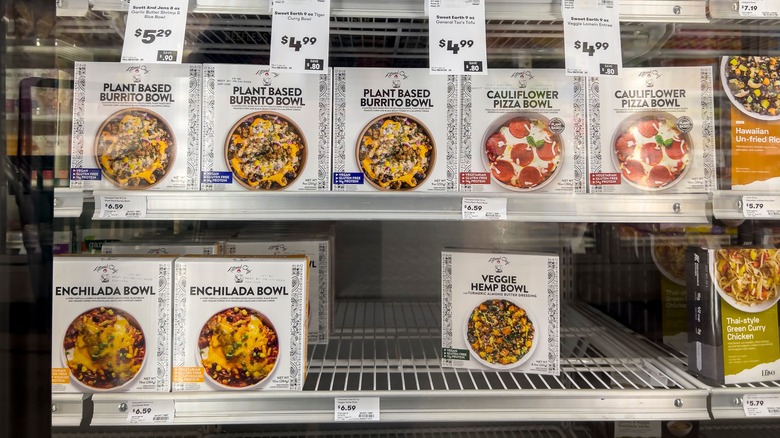The Salty Myth You Have To Stop Believing About Frozen Food
Frozen foods can be a great way to save both money and time. They are often cheaper than fresh foods, especially when you buy them in bulk, and they have a longer shelf life. You can keep them in your freezer for months and only use them when they are needed, without worrying about them going bad, which reduces the amount of food you waste. Plus, pre-cut frozen vegetables can save you time on meal prep, and frozen dinners can be a quick and easy option when you simply don't have time to cook.
Many people believe that frozen foods are unhealthy, though, particularly because of the rumored amount of salt they include. Salt is a preservative that is used in many foods to extend their shelf life, but that doesn't necessarily mean that frozen foods contain higher amounts of salt than any other foods you'd buy in a grocery store. If you believe this salty myth, it's time to rethink it.
Frozen foods don't always high have sodium content
Like most food products, frozen foods have varying levels of salt depending on the type of food and the way it is prepared. Some frozen meals and snacks can be high in salt because it's used as a flavor enhancer. For example, Hungry-Man Home-Style Meatloaf has 1,660 milligrams of sodium, and Weight Watcher's Smart Ones Classic Favorites Salisbury Steak has 900 milligrams. However, other frozen dinners can be quite healthy and are lower in salt. For instance, the Tattooed Chef Veggie Hemp Bowl only has 260 milligrams of sodium, and the Lean Cuisine Apple Cranberry Chicken contains just 510 milligrams.
Frozen fruits and vegetables are already naturally low in salt and can also be a healthy option. They are usually frozen when they are at their peak ripeness, which allows them to retain their nutritional value, flavor, and texture. If you are still on the fence about frozen foods being healthy or unhealthy, or if you are trying to lower your salt intake, it is important to read the nutrition label when choosing what frozen foods fit best into your diet.
How frozen foods are preserved without a lot of salt
Mass-produced frozen food is typically frozen and packaged using specialized equipment and processes to retain freshness. The food is first prepared and then treated. This means that fresh vegetables are blanched, fruits are dipped in an acidic mixture, or meats are treated to kill bacteria. Then, using methods like convection freezing or flash-freezing, the foods are rapidly frozen to help preserve texture and flavor. Once the food is frozen, it is packaged and labeled. Finally, the foods are stored in freezers that are set at very low temperatures to ensure that they remain frozen. These processes are usually enough to preserve the food — no added salt needed.
In general, frozen foods can remain safe to eat indefinitely if they are kept cold enough. However, most at-home freezers won't reach the temperatures needed for that. Most frozen foods will stay good for six to 12 months, and leftovers or pre-cooked foods are generally good for two to six months, but this depends on the type of food and how it is stored. It's important to note that while these foods will stay good for longer periods of time, they will lose flavor, and their texture can be off if left in the freezer for too long.


